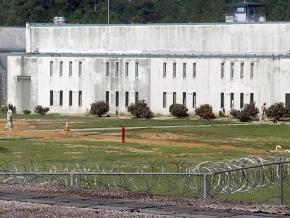Prisoners plan to shut down a barbaric system
The deadly prison uprising in South Carolina in April has led to a call for a nationwide prison strike beginning on August 21, reports .
PRISONERS ACROSS the U.S. are calling for a nationwide prison strike starting on August 21 in response to the riot at Lee Correctional Facility in South Carolina last April, during which seven men were killed and 22 injured in the deadliest incident of prison violence in the last quarter century.
The strike later this month — called by Jailhouse Lawyers Speak, a group of incarcerated prisoner-rights advocates — challenges the vaguely worded official narrative of the April riot as “gang-related.” Instead, the group argues that incidents of prison violence are conneted to the increasingly barbaric conditions in prisons and the hopelessness and desperation those conditions breed.
The riot at Lee Correctional Facility — named for Confederate Gen. Robert E. Lee — followed decades of increasingly punitive and restrictive prison policies.
Beginning with Bill Clinton’s infamous 1994 crime bill, prisons, though never designed for rehabilitation, accelerated the dismantling of the meager education and cultural programs they did have.

Funding was also redirected away from basic essentials like food, clothes and miniscule inmate wages toward more aggressive policing and larger contracts with for-profit private prisons. Young, Black men were infamously deemed “super-predators” by Hillary Clinton, providing rhetorical cover for these dehumanizing policy mandates.
In the quarter century since, under the watchful eyes of Republicans and Democrats, prisons have continued their medieval slide into barbaric conditions.
Specifically at Lee Correctional, prisoners are often forced to wait a week between showers. Due to needlessly elongated “counts,” inmates sometimes wait 12 to 18 hours between meals. Food is often expired and even labeled “not for human consumption,” according to an interview with three prisoners at Lee Correctional.
Recreation time is sparse and irregular. There have been reports of assault by guards, and at another facility in South Carolina, three guards are facing charges for attempted murder of an inmate.
At the time of the riot, 44 guards were on duty overseeing 1,583 prisoners. Hours went by before there was any attempt by guards or EMTs to intervene or attend to the injured. When it was over, Eddie Casey Jay Gaskins, Joshua Svwin Jenkins, Michael Milledge, Cornelius Quantral McClary, Damonte Marquez Rivera, Raymond Angelo Scott and Corey Scott had lost their lives.
THE STRIKE demands, though formulated in direct response to the tragedy in South Carolina, are national in scope and recognize that the dehumanizing conditions at Lee Correctional are not an aberration or a failing of the system, but rather the system working exactly as intended.
Neglect, overcrowding, guard violence, and continuing privatization and austerity measures are the reality at every prison, jail and detention center across the country.
The strike’s comprehensive demands take aim at each axis of power in the criminal justice system: policing, prosecution and prisons. These include fair wages for prison labor, an end to racist gang-enhancement laws and life-without-parole sentencing, voting rights for all the incarcerated and specific funding for rehabilitation services.
Prisoners will lead work stoppages, sit-ins, boycotts and hunger strikes from August 21 through September 9, which marks the 47th anniversary of the Attica prison uprising. Despite the limitations in communication and the threat of severe repression, leaders are hopeful the strike will lead to “a sustained and equally transformational protest.”
The strike builds on the momentum of the 2016 prison strike — up until this point the largest in U.S. history.
This ongoing work has helped to forge a carefully constructed web of communication and necessarily creative organizing strategies. As part of this, prisoners are publishing a newsletter about the strike. The first issue lays out the power of incarcerated workers to shut down the system and demand an end to its violence:
Replacing 19 days of prisoner labor can cost millions, not to mention the cost of breaking occupations and repairing damaged facilities. This action can bankrupt not only prison systems, but entire state budgets. Exposing retaliation and drawing attention to horrendous conditions and routines also corrodes the prisons’ public legitimacy.
By the end of this protest period, any impacted government is likely to grant substantive concessions to prisoner demands and open its minds to harm-reducing reforms, alternatives and policy changes. This is how direct action on the inside rapidly advances every aspect of the multipronged struggle against mass incarceration or for abolition everywhere.


